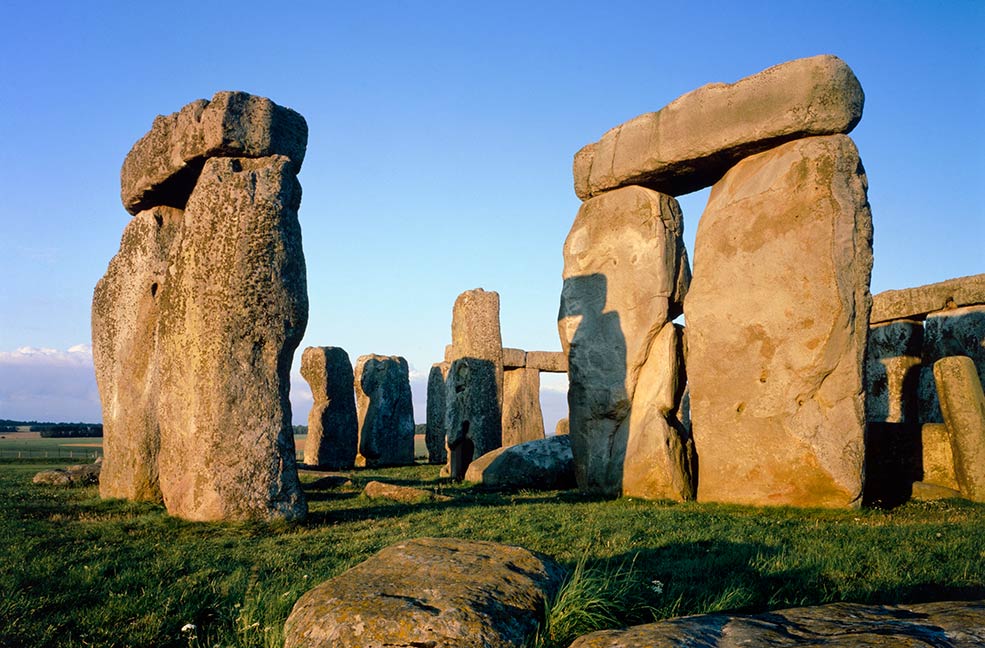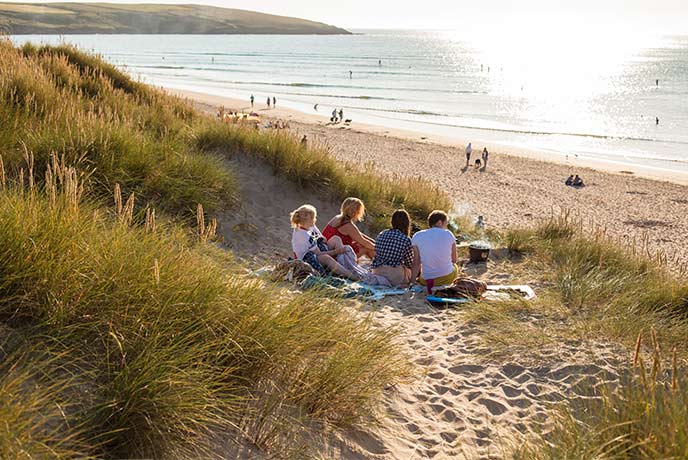Millions of people worldwide are familiar with the iconic ring of stones along the A303 and the chances are that all of us have, at one time or another, been stuck in traffic along that stretch of road. With a casual glance to the side, we have all been guilty of giving the World Heritage Site of Stonehenge far less credit than it deserves. Granted, the site is indeed a pile of stones, but Stonehenge facts such as how they arrived here, how they have survived for over 4,000 years, and how they draw in in excess of over a million visitors a year, is nothing short of miraculous.
The site dates back to 3000 BC, when the first bank and ditch were dug out and built. The stones were added at a later date in about 2500 BC, which is when an earlier version of the circle we all know and recognise came into creation. The Sarsen Stones, which are the largest stones, weigh over 35 tonnes and were most likely brought to the site from the Marlborough Downs. The smaller Bluestones were transported from Wales, over 150 miles away. I think it is safe to say that this implies an impressive feat of engineering to coordinate the transportation of the stones, and erect them with none of the modern machinery we would use now.
Due to the sheer volume of visitors, unfortunately there is no access to the stone circle on a daily basis, though with the installation of the new Stonehenge Visitor Centre, which was opened in 2013, a whole new stones experience is now available. Starting with the exhibition, visitors are able to walk through a 360 degree interactive view of the stones, being transported back in time to the very early settlers at the site, and then progressing forward through time to see how the stones have changed and how the surrounding landscape has been altered.
The adjacent room holds a wealth of objects which have been excavated across the world heritage site, and puts the items into their social context, explaining how they would have been used and giving the opportunity for visitors to touch examples of the various artefacts. Several television screens reveal various historians’ theories about what Stonehenge was used for and why it was built, but the visitor centre also gives you the opportunity to draw your own theories on the mysteries of Stonehenge.

A final room at the back offers a rotating exhibition, putting various collections on display, such as paintings of Stonehenge, and the site at various significant points of history, such as Stonehenge during the war. Five re-created Neolithic houses at Stonehenge reveal the type of homes the builders of the ancient monument might have lived in 4500 years ago. Far from being dark and primitive, the homes of our distant ancestors were incredibly bright and airy spaces and consisted of a single room measuring five metres on each side with white chalk walls and floors designed to reflect sunlight and capture the heat from the fire. The smoke from the fire filtered up through a thatched roof – knotted or tied straw carefully secured onto a hazel woven frame. Around the walls stood wooden or woven furniture – beds, seating, storage and shelving.
Having put the whole creation of the stone circle into context and having discovered a little more about the people who were living around and building Stonehenge, the next step is to hop on a bus outside of the gift shop, and progress along the 1.5 mile decommissioned 'A' road to the stones themselves.
An anti-clockwise walk around the circle allows you to see the stones at all angles and to get lots of good photos. There is the option of taking the shuttle, walking back to the visitor centre along the road, or taking a detour across the National Trust landscape, where you will be able to see much more of the heritage site up close, with features such as the Cursus Barrows and the Stonehenge Cursus. Dotted along the way are interpretation panels, explaining the archaeological features in the landscape around you.
After all that history, you’re bound to need refreshments, and the Stonehenge cafe offers a range of hot snacks, as well as their signature rock cakes, which taste even better when washed down with a hot chocolate or cup of tea. A final trip into the gift shop will mean that you can purchase a postcard to take home, or a 'Stonehenge Rocks' t-shirt, in fact, almost any item that you could wish, with the iconic image of the stones on it. There is also a great range of wines and chutneys which make great gifts to take home for friends and family.
Being an English Heritage property that requires a lot of upkeep, it's not cheap but you can save money by booking tickets in advance. Stonehenge opening times are 930 to 1900 every day of the week, but last entry is at 1700. If you’re heading down to the South or West of the country, stopping off at Stonehenge is definitely worth it, as it really is a lot more than just a pile of stones. Or it makes a great day trip when on holiday in Dorset.

Photo credit: English Heritage





